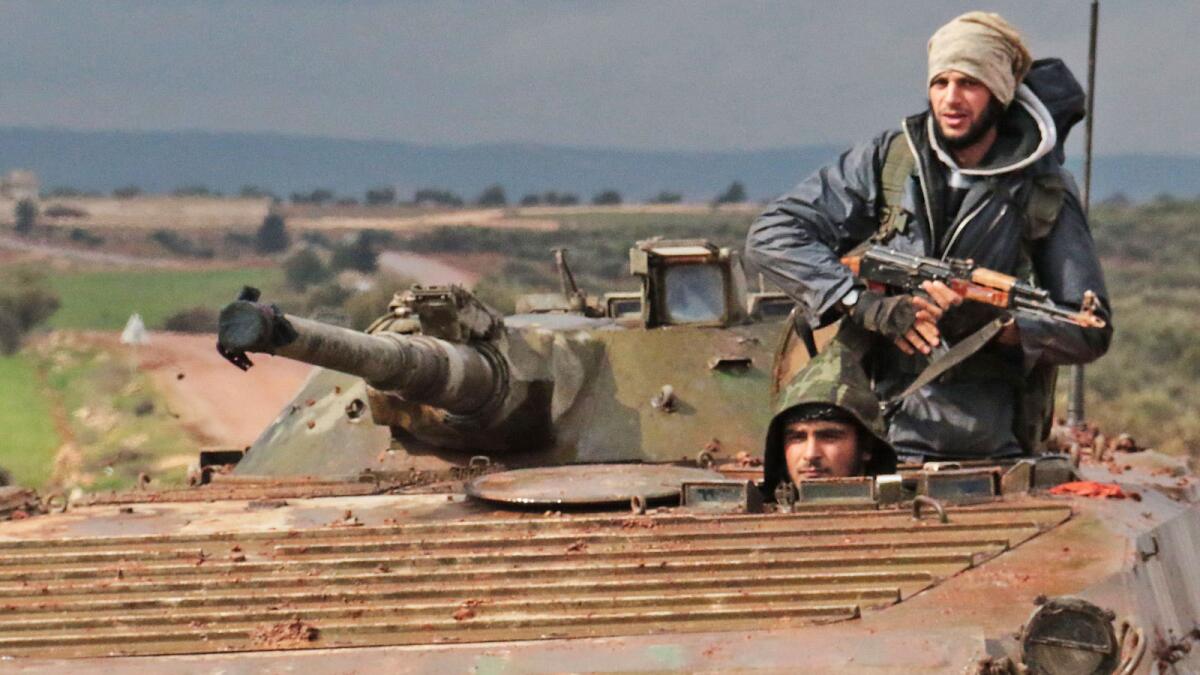Pentagon identifies 1,200 rebels to help fight Islamic State in Syria

- Share via
Reporting from Washington — Six months after President Obama announced plans to degrade and destroy the Islamic State militant group, the Pentagon has identified the first batch of Syrian opposition fighters for U.S. military training to take on the group in Syria.
The long delay in building a U.S.-backed ground force has reflected the challenge of identifying so-called moderates willing to focus on fighting only Islamic State and not Syrian President Bashar Assad’s forces in a civil war approaching its fourth year.
Gen. Michael Nagata, working with a team at U.S. Central Command, will seek to weed out any anti-Western extremists from the first group of 1,200 trainees by vetting their backgrounds against U.S. databases and intelligence from allies in the region, Pentagon spokesman Rear Adm. John Kirby said.
The Pentagon ultimately aims to train and arm 5,400 fighters to help confront the Islamist militants who control most of northern and eastern Syria. Officials said about 3,000 fighters will be trained this year.
Training with light arms will begin this spring at sites in Turkey, Qatar and Saudi Arabia. Eventually, the proxy force could operate as spotters on the front lines to call in airstrikes from U.S. and coalition warplanes, Kirby said.
“These fighters will graduate from one level to the next … just like we train American troops,” Kirby said. “We’ll get more sophisticated as they work through it.”
As many as 1,000 U.S. military and security personnel may take part in the training operation, Kirby said. Only about 100 have gone to the region so far, however.
The CIA is training another rebel group at a camp in Jordan.
The Pentagon is also starting to train and arm Iraqi military forces. Entire army divisions collapsed in the face of an Islamic State blitz last spring and summer, enabling the militants to capture vast arsenals of weapons and ammunition.
Congress appropriated $500 million for the training program in October. But the effort bogged down as the administration focused on bombing Islamic State targets and trying to cut off its ability to raise funds from selling oil, kidnapping for ransom and moving money from sympathizers abroad.
American and allied warplanes have conducted about 2,400 airstrikes in Iraq and Syria since Aug. 8. The bombing campaign has helped halt the militants’ advances in most areas, but has not pushed them out of any major cities or towns.
On Thursday, Army Gen. Lloyd J. Austin III, commander of U.S. forces in the Middle East, said Islamic State militants are losing capabilities in Syria and are “unable to take and hold new territory in Iraq.”
“The coalition remains the strength of our military campaign, and we assess that through our collective efforts we are having the desired effects on the enemy,” Austin said in a statement at the conclusion of a two-day conference in Riyadh, Saudi Arabia, with military chiefs and representatives from 25 nations in the coalition against Islamic State.
“The … campaign will take time, but we will defeat this enemy,” he said.
Follow @wjhenn for military and defense info.
More to Read
Sign up for Essential California
The most important California stories and recommendations in your inbox every morning.
You may occasionally receive promotional content from the Los Angeles Times.














